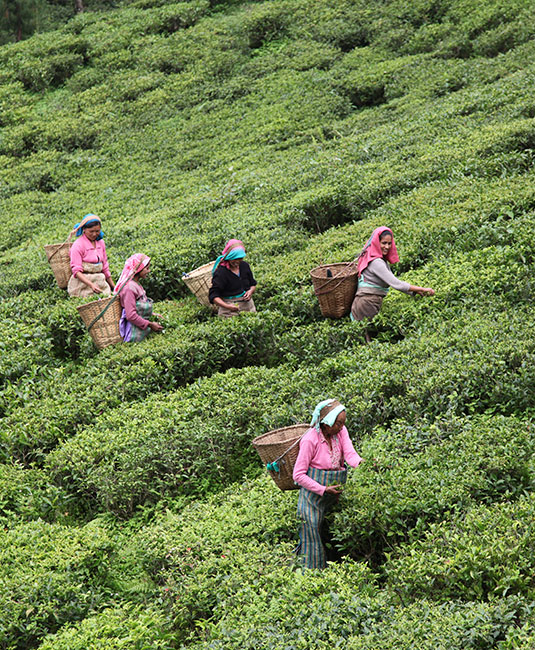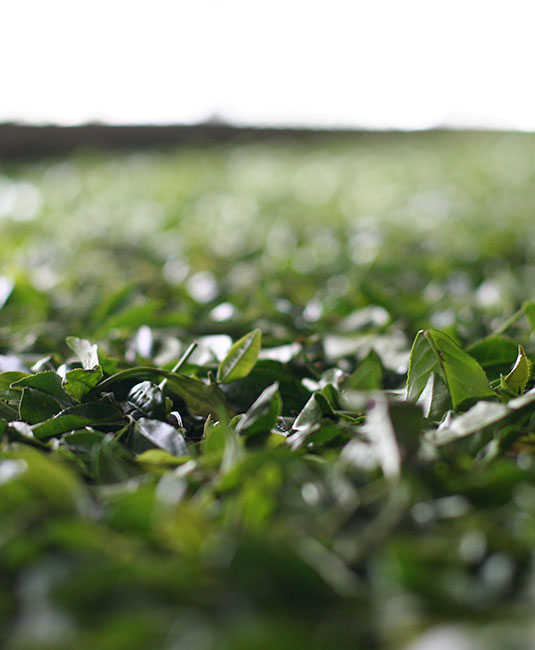Free shipping from $55
Himalayan Flower, the slender leaves of First-Flush Darjeeling
Himalayan Flower has a delicate fresh floral fragrance that heralds the first notes of spring. This richly aromatic black tea comes from the spring harvest and is prized by many tea lovers around the world. Rightly so: to taste it is to be transported to India and the timeless landscapes of Darjeeling.
In the Himalayan foothills, around a hundred gardens share the privilege of growing one of the most popular teas in the world: Darjeeling. Shrouded in mystery, this appellation (the only protected designation of origin in the tea-growing world) offers rare teas with great depth that are frequently imitated but never equalled.

At the crossroads of cultures and traditions
Many tea enthusiasts have fallen for the aptly named “land of the thunderbolt” (the word Darjeeling is derived from the Tibetan Dorje ling). At the crossroads between Tibet, Bhutan, Nepal and Bangladesh, the region is a hub of cultures and traditions in which tea plays a crucial role. The plant has even influenced the history of this land of confluences. In 1780 the territory was controlled by the Buddhist kings of Sikkim. It was then invaded by Nepal, before the British took control of it in 1835 for the British East India Company. With ideal latitudes for tea cultivation, Darjeeling has survived different eras and political upheavals and today offers us its inimitable and protected black tea.
Tea bushes as far as the eye can see
Surrounding the city of Darjeeling in West Bengal lies a dreamy landscape: the sacred Himalayan mountains form a 250 km range of vertiginous jagged peaks. On their slopes, fields of green shrubs extend as far as the eye can see. Here, there are no Assam tea plants like elsewhere in the country. It was the botanist Robert Fortune (see pp. 30-31) who, in the 19th century, planted tea bushes he brought from China to India. The expatriated Camellia sinensis flourished in Bengal to the extent that the plantations spread until they almost covered the steep mountain slopes.

An exceptional spring harvest
Today, these tea gardens occupy 17,500 hectares and employ half the local population! Some produce exquisite leaves and delicate green buds that are hand-picked in spring. The first harvests of the year are eagerly awaited and are celebrated for the undisputed excellence of the teas. And for good reason: the bushes, which are carefully left dormant for several months, concentrate in their fresh shoots all the essential oils that slowly accumulate over the winter. This means that only the first spring pluckings contain such a large quantity of buds (golden tips) and first leaves loaded with aromatic oils. This is what comprises the first flush (literally, the first harvest) that is so exceptional it is in demand all over the world.
A rare, mysterious tea
Hallowed fragrances emanate from this mythical tea, which traces the entire history of the beverage in one cup. Grown between Buddhist and Hindu temples, the leaves and buds of Himalayan Flower acquire coppery shades that infuse into a golden liquid with an elegant astringency coupled with a hint of bitterness. The resulting tea has great finesse that develops and lingers through the lengthy finish, sustained by a unique tannic structure! The floral, vegetal and almond notes go perfectly with a buttered croissant fresh from the oven, to reveal the wonders of this timeless region at the start of the day.